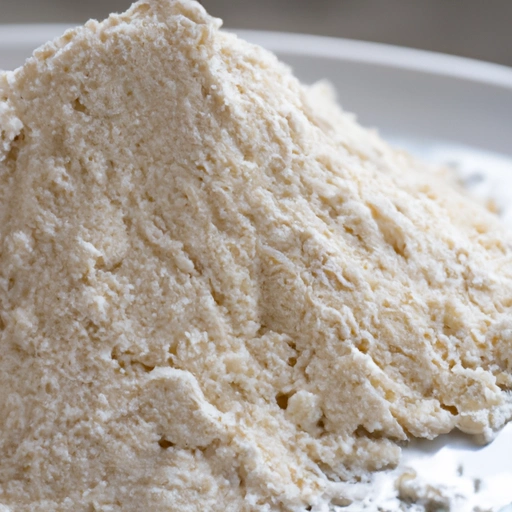Masa
Description

Masa, also known as masa harina, is a traditional flour made from nixtamalized corn that is a cornerstone in Latin American cuisine. It is a versatile ingredient that can be found in a variety of textures, ranging from a fine flour to a coarse dough, and is used to make many staple dishes in both traditional and modern kitchens. Masa is typically prepared by soaking corn in a lime solution, then grinding it into a smooth dough or flour. This process increases the nutritional value and flavor of the corn, making masa a unique and culturally significant food ingredient.
Common uses
Masa is commonly used to make a variety of dishes, including tortillas, tamales, pupusas, arepas, and empanadas. It serves as a base for many recipes and can be shaped and cooked in numerous ways to create different textures and flavors. Its adaptability and rich cultural significance make it a beloved ingredient in households and kitchens around the world.
Nutritional value
Calories
One cup (approximately 120 grams) of masa harina contains around 416 calories.
Protein
Masa provides about 11 grams of protein per cup, making it a good source of plant-based protein.
Fat
While relatively low in fat, masa contains about 4 grams per cup.
Carbohydrates
Carbohydrates are abundant in masa, with around 88 grams per cup.
Vitamins
Masa is fortified with vitamins, especially B vitamins such as folate, thiamin, and niacin, due to the nixtamalization process.
Minerals
It also contains essential minerals such as calcium, iron, magnesium, and zinc.
Health benefits
As a whole grain, masa can contribute to a healthy diet by providing dietary fiber which aids in digestion. The nixtamalization process makes the nutrients in corn more bioavailable, particularly niacin, which can help prevent deficiencies. Whole grain foods like masa are also associated with a lower risk of heart disease and type 2 diabetes.
Potential risks
For those with a corn allergy or sensitivity, consuming masa can cause an adverse reaction. Additionally, as it is relatively high in carbohydrates, individuals with insulin resistance or diabetes should consume it in moderation and as part of a balanced diet.
Common recipes
Masa is used in making corn tortillas, tamales, gorditas, and sopes. It is also the base for many types of corn-based snacks and breads.
Cooking methods
Masa can be steamed, grilled, fried, or baked, and can be used in both sweet and savory dishes.
Pairing with other ingredients
Pair masa with flavors such as chili, lime, cilantro, beans, cheese, meats, and vegetables. It complements a wide range of ingredients.
Summary
Masa is a traditional corn dough that plays a crucial role in Latin American cuisines. With its rich history and extensive use in a myriad of dishes, masa is both versatile and nutritious, offering protein, vitamins, and minerals. While it is suitable for most, people with corn allergies or carbohydrate sensitivities should be mindful of its consumption. From homemade tortillas to delicious tamales, masa is the foundation of many beloved recipes and continues to be celebrated in kitchens worldwide.